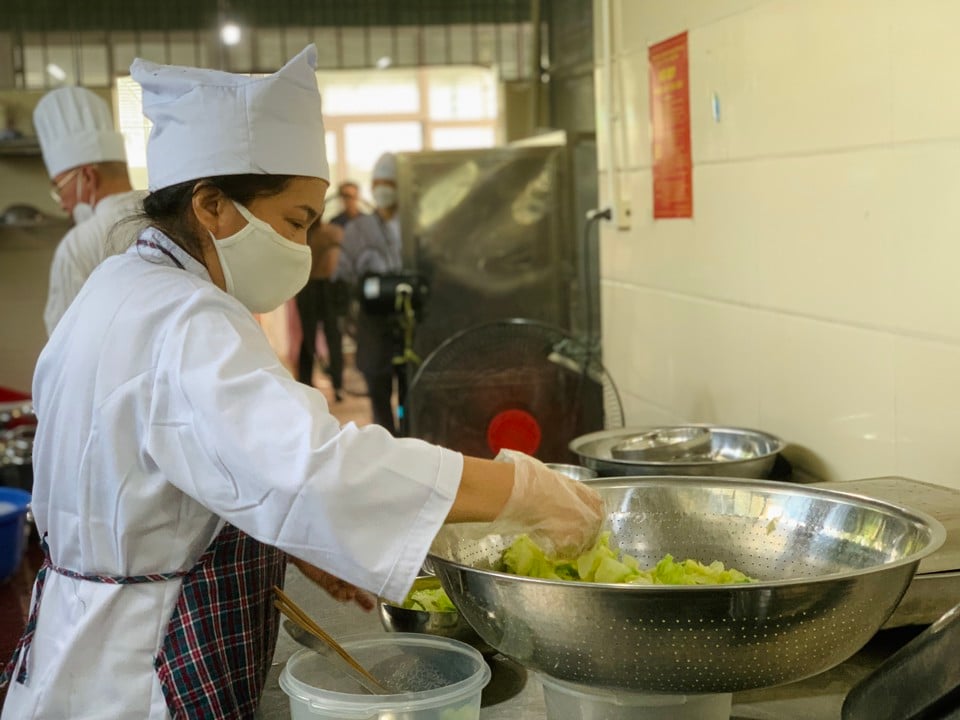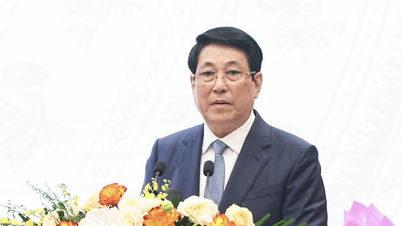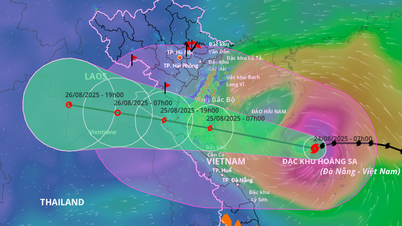Nutrition policies in Vietnam are now quite comprehensive, including Decision No. 02/QD-TTg approving the National Nutrition Strategy for the 2021-2030 period and vision to 2045. However, nutritional standards in school meals have not been developed in detail and depend on the "chefs".
The world succeeds thanks to standardization of school nutrition
Talking to Dan Viet reporter, Professor Nakamura Teiji - President of the Japan Nutrition Association shared the story of how legalizing school nutrition helps improve the height of people in this country.
As a participant in designing an educational program on nutritional science to improve the stature and physical condition of Japanese people, Professor Nakamura Teiji believes that the key to improving nutrition is the school meal program.
The Japanese School Meal Law of 1954 was applied in the education sector, with nutritional intake standards and food safety management standards for school meals. The law focuses on the main contents: having nutritional standards for school lunches; determining standards for necessary nutritional content; standards for food safety management for school lunches...

Professor Nakamura Teiji - President of the Japan Nutrition Association. Photo: PV
After more than 50 years, the Japanese have achieved remarkable changes in stature and height. In 1954, the Japanese were the same height as the Vietnamese, but now they are among the tallest in Asia.
According to Professor Nakamura Teiji, school lunch is also an opportunity for children to explore and learn about many fields such as nutrition, health, agriculture , fisheries, labor, food processing, cooking, food hygiene, relationships between people, the environment and culinary culture in a comprehensive way.
In 2005, Japan continued to promulgate the Basic Law on Nutrition Education, which mentioned the responsibility of businesses in raising people's awareness of the importance of nutrition. Businesses also focused on cooperating with ministries and agencies to apply nutrition measurement methods.
Although Vietnam has made many improvements in nutrition in recent years, compared to other countries in the world, Vietnamese people's height is still modest.
Both lack and excess of nutrition are harmful.
Dr. Truong Hong Son, Deputy Secretary General of the Vietnam Medical Association, Director of the Vietnam Institute of Applied Medicine, said that school meals play an extremely important role in the development of school-age children. Excess or lack of nutrition leads to malnutrition, including overweight and obesity.

Dr. Truong Hong Son, Deputy Secretary General of the Vietnam Medical Association, Director of the Vietnam Institute of Applied Medicine. Photo: PV
According to the 2019-2020 national nutrition survey, the rate of stunting in children under 5 years old in Vietnam is 18.2%. The rate of overweight and obese children in Vietnam has more than doubled in 10 years, from 8.5% in 2010 to 19% in 2020.
The double burden of nutrition in school-age and pre-school age includes under- and over-nutrition related to chronic non-communicable diseases. Primary school age 6-11 years is the time when the body develops both physically and mentally, this is the stage of accumulating nutrients to prepare for puberty. Therefore, if there is a nutritional deficiency, it will affect the process of perfecting the child's stature and intelligence later.
"Therefore, standardizing school nutrition will help provide energy and essential micronutrients, improve nutritional status, thereby enhancing children's physical and intellectual development. At the same time, school nutrition also builds healthy eating habits for children such as diversifying foods and increasing green vegetables," said Dr. Truong Hong Son.
According to Dr. Son, after lunch and snacks at school, and dinner at home, parents need to supplement nutrition for their children. It is necessary to ensure a reasonable distribution between meals at home and at school. The energy of dinner at home should account for 30-40% of the total energy needs of the whole day.
Meals must provide enough nutrients for each group of students, including: normal children, malnourished children, overweight and obese children. The energy provided to the children must ensure enough nutrients, especially 3 important components: protein, carbohydrates, and lipids.
Parents also need to assess their child's body mass index (BMI) to adjust their diet appropriately.
In addition, feed children a variety of foods. Daily meals need to be varied, with at least 5 of the 8 food groups, of which the fat group is mandatory. Eat a combination of vegetable and animal protein sources, animal and vegetable fats. For the group under 10 years old: the ratio of animal protein to total protein >50%, children need to eat more protein from animal sources than protein from other sources. For the group 11 years old and above: the ratio of animal protein to total protein >35%.
Children should not eat salty foods, always use iodized salt in food preparation, children should use less than 5g of salt/day. Limit consumption of refined sugar. WHO recommends reducing consumption of disaccharides and monosaccharides in the diet, reducing sugar intake to less than 10% of total energy intake.
Use locally available food sources, prioritizing clean, safe food sources with clear origins for food processing.
Children need to drink enough water every day. Children 6-11 years old need an average of 1.3-1.5 liters of water, prioritizing filtered water, fruit juice, fresh milk without added sugar, vegetable juice, and soup.

A kitchen at a school in Hanoi. Photo: Nam Du
According to the Director of the National Institute of Nutrition, Tran Thanh Duong, school-age children develop very quickly physically and mentally but are also vulnerable to nutritional problems. Nutritional disorders caused by unbalanced diets, including malnutrition and overnutrition, affect stature, intelligence and increase the risk of non-communicable diseases in adulthood.
A survey in several provinces and cities in 2017-2018, including Hanoi and Ho Chi Minh City, showed that the rate of overweight and obesity in primary school children in urban areas was 41.9%, and the rate in middle school children in urban areas was 30.5%.
The reality is that malnutrition in children in mountainous and disadvantaged areas, micronutrient deficiencies in both rural and urban children, and overweight and obesity are increasing rapidly in urban areas.
Intervention programs and research projects to improve diet, nutrition education, physical education for children, students and people, develop recommended nutritional needs for Vietnamese people, nutrition pyramid, and appropriate nutritional advice have also been implemented in recent years.
However, according to Associate Professor Dr. Tran Thanh Duong, these programs have not been established as mandatory regulations and standards, so they have not been put into practice. These regulations need to be legalized to become mandatory regulations for education systems.
Sharing the same view, Prof. Dr. Le Thi Hop, former Director of the Institute of Nutrition, Ministry of Health, former President of the Vietnam Nutrition Association, also recommended that legalizing/politicizing school nutrition in our country is an urgent issue to have a sustainable and synchronous solution.
"Legalizing school nutrition helps standardize meals for students, standardize processing procedures, and increase awareness of healthy nutrition to help children develop comprehensively, reduce the risk of chronic non-communicable diseases, and affect their physical health and future development" - Prof. Dr. Le Thi Hop.
Source: https://danviet.vn/bai-4-can-co-tieu-chuan-ve-dinh-duong-hoc-duong-20250107164732563.htm



![[Photo] Phu Quoc: Propagating IUU prevention and control to the people](https://vphoto.vietnam.vn/thumb/1200x675/vietnam/resource/IMAGE/2025/8/24/f32e51cca8bf4ebc9899accf59353d90)
![[Photo] Party and State leaders meet with representatives of all walks of life](https://vphoto.vietnam.vn/thumb/1200x675/vietnam/resource/IMAGE/2025/8/24/66adc175d6ec402d90093f0a6764225b)































































































Comment (0)